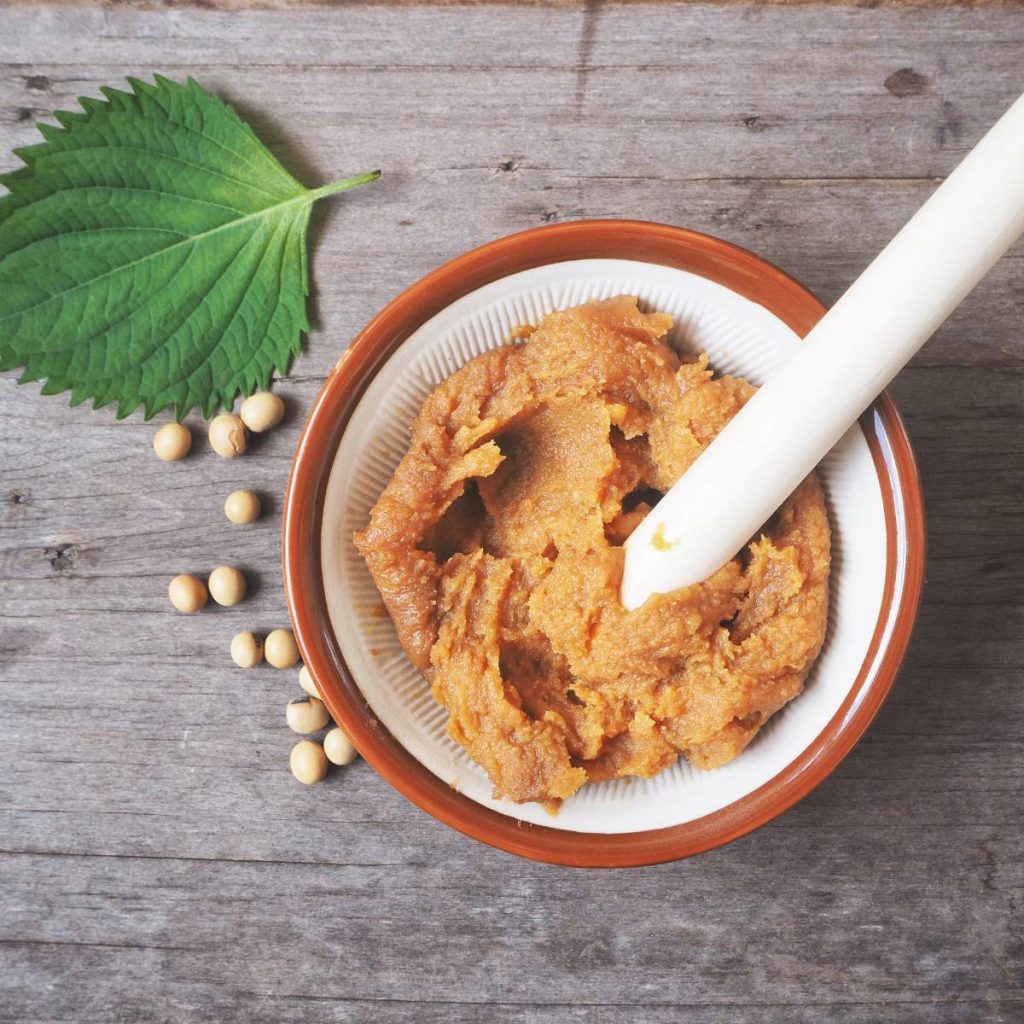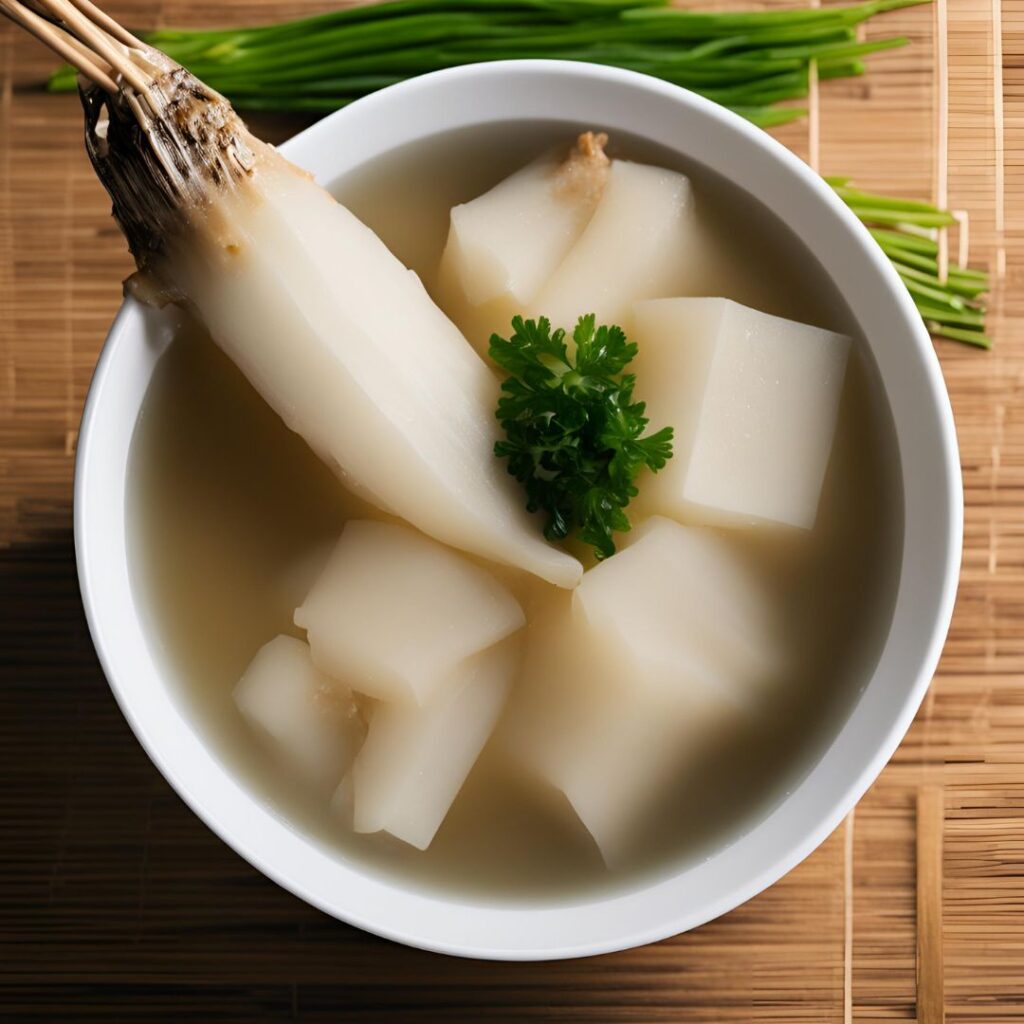In this article, I’ve got the secret to making the best bowl of miso soup – the miso paste.
And let me tell you, not all miso pastes are created equal. Some are sweet, some are salty, and some pack a punch.
But don’t worry, I’m here to help you find the best miso paste for miso soup that will tantalize your taste buds. So grab a spoon, and let’s start the search for the best miso paste together!

What is Miso?
Miso is a traditional Japanese ingredient that is made by fermenting soybeans with salt and koji (a type of mold) and sometimes many other ingredients too.
The mixture is then left to mature for several months to several years, resulting in a thick, salty, and slightly tangy paste that is commonly used as a seasoning in Japanese cuisine.
Miso is a versatile ingredient that can be used in many dishes such as miso soup, sauces, marinades, and dressings.
It is also a rich source of vitamins, minerals, and probiotics, making it a nutritious addition to any meal.
Want to know more?
Keep Reading.
What Does Miso Paste Taste Like?
Miso paste has been tantalizing taste buds for centuries with its rich, salty-tangy flavor. And did you know that there’s not just one type of miso, but hundreds, each with its own unique taste and texture?
From sweet and mild shiro miso to robust and savory aka (red) miso, the world of miso is vast and varied.
So whether you’re a miso soup fanatic or a fan of experimenting with new flavors, get ready to discover some of my favorite (and easy-to-find)types of miso paste.

The Secret of Miso Soup: 7 Best Miso Paste Brands
Whether you’re looking to buy miso soup online or make your own homemade miso soup from scratch,
you’ll want to start with a high-quality miso paste that suits your taste preferences.
Some people prefer a sweeter, milder flavor and opt for white miso paste.
While others enjoy a stronger, bolder taste, go for red miso paste.
Either way, you’ll want to look for a miso paste that is made from organic soybeans and rice koji for the good flavor and quality.
Here are 7 best store-bought miso that you should try:

This organic white miso is made from organic rice and soybeans, with bright beige in color, an excellent balance of refreshing aroma, and umami.
It has a mild and slightly sweet flavor that is ideal for making brothy soups and sauces. This is my personal favorite among the 7 miso paste brands because of its versatility and the brand is easy to find.
You can also try this miso paste on another Japanese dish like the Japanese Cream Stew Recipe.

This is a type of Japanese miso paste that is made from fermented soybeans and barley or rice. It has a rich, savory flavor with a slightly sweet undercurrent and a bold, intense aroma.
Due to its longer fermentation period, red miso tends to have a more robust, saltier taste compared to white and yellow miso. As a result, it’s recommended to use it in dishes with bolder flavors, as its taste can overpower lighter-flavored foods.

For a different miso recipe, try this hatcho miso which is an extremely dark, unique, and strong flavor.
It is often used in stews, soups, and marinades Whether you’re using hatcho miso in soup, sauce, or marinade, its deep, and savory, with a slightly sweet aftertaste flavor that is sure to add a unique and delicious touch to many different dishes.

Marukome gluten-free miso paste is a type of Japanese miso paste that is made without gluten-containing ingredients such as wheat or barley.
Instead, it is made using rice and soybeans, which are naturally gluten-free. This makes it a great option for those with gluten sensitivities or celiac disease who still want to enjoy the savory, umami-rich flavor of miso.

This exceptional Awase miso is a blend of white and red miso, known as mixed miso. It is aged for a good one and a half years, giving it a unique flavor that is similar to red miso but more subdued and less salty.
This makes it an excellent choice for complementing delicate flavors in dishes, like miso soup with eggplant. Clams or any other seafood pair well with this as well because you can also get the best of both words – white and red miso.

This miso is a type of Japanese miso paste made using barley and soybeans. Mugi Miso has a distinctive, rich earthy taste with a slight sweetness compared to other miso types.

This miso is a medium-strong Japanese seasoning, which is made using traditional techniques from fermented soya beans and unpolished brown rice. The fermentation period is a minimum of 12 months. It has a unique, nutty flavor that sets it apart from other types of miso and makes it a popular choice for use in a variety of dishes.
Our Top Picks Miso Paste
Primary Rating:
4.4 | Primary Rating:
4.5 | Primary Rating:
4.5 | Primary Rating:
4.6 |
Description:
| Description:
| Description:
| Description:
|
$23.52
| $10.99
| $17.56
| $8.20
|
- White Miso Paste
- It is often used in lighter soups like miso soup, salad dressings, and marinades.
- Gluten-free ingredients such as wheat or barley.
- Great option for those with gluten sensitivities or celiac disease
- Made fermented soya beans and unpolished brown rice.
- Unique with nutty flavor
- A blend of white and red miso, known as mixed miso.
- Complementing delicate flavors in dishes, like miso soup with eggplant, clams, or any other seafood
Factors to Consider When Buying Miso Paste
When choosing a good miso paste, there are a few things to consider.
Firstly, now you know there are different types of miso – like white, yellow, red, and brown rice miso – each with its own unique flavor, color, and texture.
So, pick one that you think will taste best for what you’re making.
Secondly, take a look at the ingredients in the miso paste – if you want to avoid things like MSG, go for miso that’s made with just soybeans, salt, and koji.
And finally, make sure to choose a miso paste that has many of the characteristics I mentioned in my soy sauce article for both health and flavor benefits. (eg. organic, grown in japan, whole soy beans etc)
Like wine, it may take a few tastes to find what you really like
But in the meantime, you can choose one above for starters to see if it suits your taste!
Is Miso Spicy?
If you’re wondering if miso is spicy, don’t worry – it’s actually quite mild in flavor.
You can add a bit of heat to your miso soup by using a spicy soy sauce or adding some crushed red pepper flakes to the mix.
Instant Miso Soup or Homemade Miso Soup?
Instant Miso Soup
Instant miso soup is a quick and easy way to satisfy your cravings for a warm and comforting bowl of miso soup.
Unlike homemade miso soup, which requires a bit of time and effort to make from scratch, instant miso soup can be ready in just a few minutes with the help of a packet of miso soup mix.
To make an instant miso soup recipe, all you need is a packet of miso soup mix, some hot water, and any additional ingredients you want to add.
The mix usually contains miso paste, dried seaweed, and sometimes even tofu or green onions.



Konnichiwa! (Hello!) I'm Pat Tokuyama, a Japanese tofu cookbook author, who travels for music, food, and adventure. If you like Japanese tea, checkout some of the newestorganic japanese tea, matcha bowls and noren and more!
** Curious about the Plant Based Japanese Cooking Club? ** Learn more here!
Homemade Miso Soup
On the other hand, homemade miso soup takes a bit more effort, but the result is a soup that’s bursting with flavor and packed with nutrients.
You start by simmering bonito flakes in water to make a dashi broth, then add in miso paste, cubed tofu, and sliced green onions. Try this miso soup recipe of mine 🙂
If you want a combination of sweet and salty flavors on your miso soup, I suggest trying Marukome Nama Shio Koji, another favorite of mine that is really versatile seasoning.
One of my favorite sources for miso soup recipes and tips is the Just One Cookbook Miso soup – they have a great recipe for homemade miso soup and other Japanese dishes you can try.

Miso Paste vs. Soybean Paste
Miso paste and soybean paste are both fermented bean pastes, but they originate from different countries and have distinct flavor profiles.
Soybean paste or Doenjang is a type of Korean soybean paste made by grinding soybeans into a thick paste and allowing it to ferment for several months with water and salt. It has a gritty texture and a robust, earthy flavor.
Miso paste and soybean paste differs mainly in the presence of koji, which is an ingredient for miso.
Furthermore, soybean paste has a more pungent aroma due to its longer fermentation process that produces a somewhat “cheesy” smell, while miso paste can be ready in as little as a week or two.
While both can be used in various dishes, they are not interchangeable due to their differences in taste and texture.
Miso Paste vs. Miso Powder
Miso paste is a traditional fermented soybean-based ingredient with a thick consistency while Miso powder is made by grinding dried miso paste into a fine powder, making it more convenient to use and dissolve in liquids but with a less complex flavor.
However, some people find that the flavor of miso powder can be less complex and less authentic than that of miso paste.
Since the paste is so widely available not sure I’d recommend the powder. Unless you’re using it for something that calls for it specifically. (like ice cream ;p)
Conclusion
When it comes to choosing the best miso paste, you have many choices. If you want something more neutral, go with white. If you want a darker bolder flavor, go with red.
Some Japanese recipes call for specific types of miso and I would suggest not substituting the two if possible. White and red miso aren’t always interchangeable, even when adding sugar to red to make it sweeter for example.
That way, you’ll get to experience the dish the way it was intended to be experienced.
And don’t be afraid to try out different types of miso paste, each brand can have a unique flavor and character that will surely make you want to use it more.
What do you prefer?
Or if you’re not sure, what would you start with?
Red or white? Let me know in the comments!
You may want to check and visit my page for reviews that could help you find products!












I use Hikari as well.